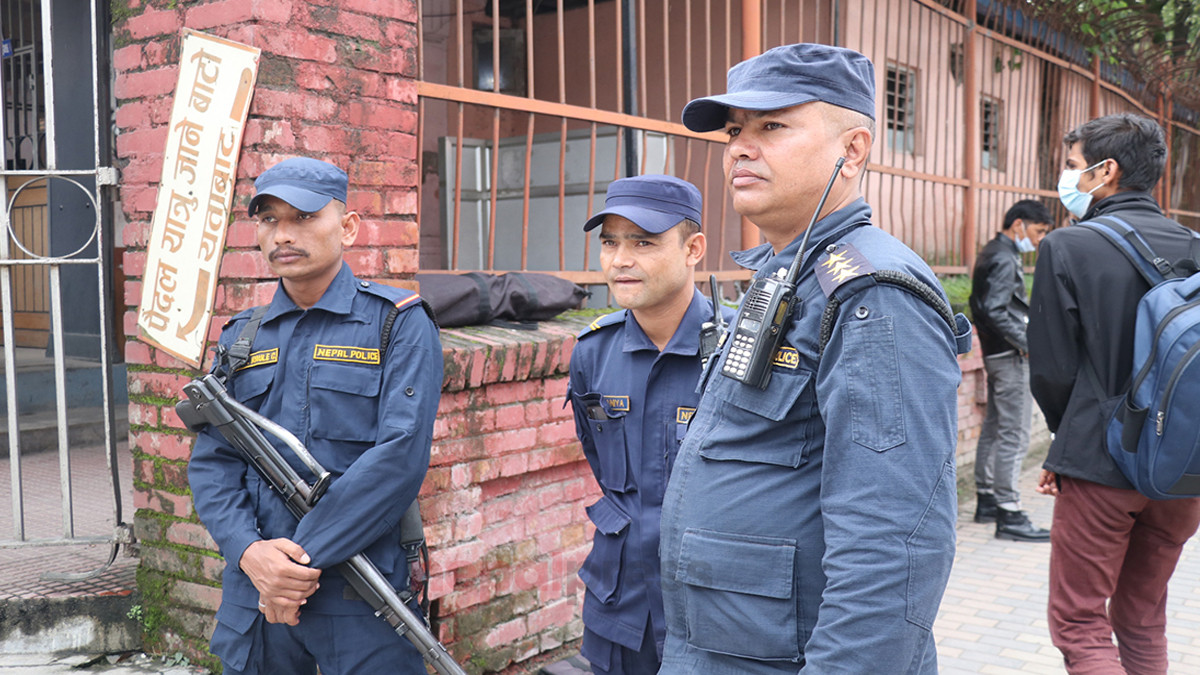
The Supreme Court (SC) in the past 10 days issued two significant verdicts in regard with a related issue, paving the way for clearing the hurdles for years in completion of a transmission line.
The SC on June 26 and on July 5 gave its verdicts on the issue concerning development of Hetauda-Bardghat transmission line.
The apex court's decisions have allowed the construction of two towers under the transmission line that is considered important in terms of supplying power generated in the east to the west. A division bench comprising judges Ishwor Prasad Khatiwada and Prakash Kumar Dhungana decided to clear legal hurdles in the construction of the towers.
Nepal Electricity Authority (NEA) executive director Kulman Ghishing sounds the construction of a tower in each transmission line is like a project at present."The tower construction remains stalled when all other works are complete."
According to Ghising, power production is high in the areas surrounding Kathmandu and the eastern region. But the lack of proportional distribution of power supplies has its implications on the consumers of western parts. At the moment when the NEA is feeling pride on the news that Nepal is supplying 364 megawatts of electricity to India, but the people of western region are untouched by the news.
After the verdict, it has become easier to install two towers at Dumkibas of Nawalparasi. The west Nepal had not been able to get qualitative electricity for the failure to take electricity from east to west in lack of construction of two towers at the place.
The locals had been obstructing the installation of the towers at Dumkibas under 220- KV Hetauda-Bardaghat transmission line.
After today's verdict, the writ petition has been scrapped and it has become easier for the NEA to carry out activities by providing compensation to locals as per the law.
Similarly, the SC on Tuesday scrapped the writ petition filed by former Minister Sarita Giri. With this, it has been easier to construct the 400-KV Hetauda-Dhalkebar-Inaruwa transmission line project, which was obstructed for a long time.
Giri filed writ petition on January 30, 2019, demanding to change the route of the transmission line and to stop the ongoing works at Padariya of Lahan municipality in Siraha. Construction of eight towers was obstructed due to an earlier verdict of the court.
The project started from Hetauda links Inaruwa which is 288-kilometers long. So, 729 towers should be constructed.
Since the transmission line is a high voltage one, its right of way will be 23 metres to the right and left from the centre.
Much of the problem was seen in using the forest area land and the private land falling under the project.
Talking to RSS with the removal of the continued obstruction seen in construction of the transmission line, NEA executive director Ghising expressed happiness over the Apex Court's decision removing the obstacles in the construction of the transmission line.
He commented that it would be much easier to carry out works on such projects in the coming days.
"The problem faced by NEA in the construction of transmission lines has been resolved. This has generated a confidence that it will help create a convenient environment for us for the long term," he said.
According to him, NEA has provided relief and compensation to the locals as per the law while constructing the projects and it would do so in the future as well without any qualms.
There are obstructions in the construction of most of the transmission lines undertaken by NEA. The possibility of these projects completing in the stipulated time is very less due to the obstructions. This situation has pushed up the project cost and also increased the timeline, which has further compounded the problem. It has affected the national goal as well.
Ghising believed that the latest two verdicts of the Supreme Court will make matters easier on other works and projects related to development and construction.
The problem could not be resolved despite efforts from time to time by the NEA leadership to that end.
A total of 244 towers had already been constructed for the Hetauda-Bardaghat 220 kV Transmission Line Project. The project could not be completed as only two towers were left to be constructed. The locals had created hindrance in the construction of these two towers demanding to change the route of the transmission line.
The people from the western region of the country had been continuously complaining to NEA as the electricity could not be supplied from the east to west. The locals of western Nepal had consistently called attention to NEA for resolving the problem, expressing their ire at being deprived of quality electricity services in their region.
NEA executive director Ghising has already promised before this that the construction of the transmission line would be finished within one month.
The transmission line presently in operation is of 132 kV capacity which can only transmit maximum 90 megawatts power. A large quantity of surplus power was wasted last year due to the lack of higher capacity transmission lines.
Nearly 500 megawatts of power can be supplied to western parts from eastern parts of the country after the completion of the double-circuit transmission line with a total 220 kV capacity.
-Ramesh Lamsal/RSS








